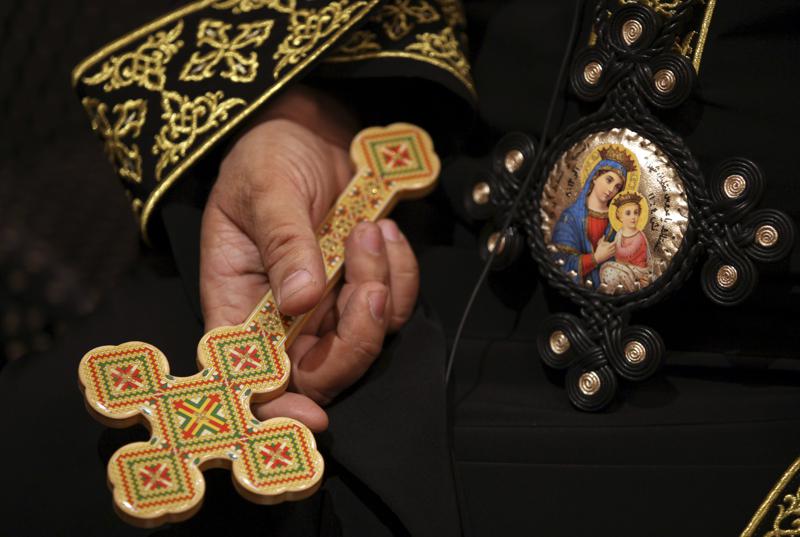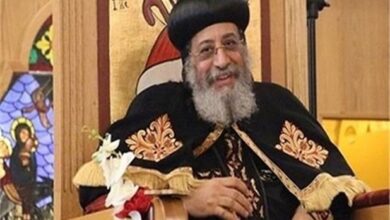Egypt witnessed numerous acts of state violence in 2011, but the Maspero massacre of 9 October, in which 28 protesters taking part in a peaceful protest were killed, was exceptional in its ferocity.
On the first anniversary of the massacre, the relatives of the dead, who were either shot or crushed to death by army Armored Personnel Carriers, are still waiting for justice after a year of legal proceedings stemming from two cases, one of which witnessed victims’ lawyers withdraw from the case and the other which saw protesters being put on trial.
Not one soldier has been charged over the killing of the 12 protesters shot during the violence. Several civilians, including protestors, bystanders and one activist, were charged with the killings. The trial was widely regarded as a farce, and all were eventually exonerated.
Three junior soldiers were found guilty of manslaughter in connection with the 15 protesters crushed to death. According to the victims' lawyers, it was little more then a fig leaf for the military hierarchy. Not one officer has been charged.
Events
“On 9 October, Copts’ dreams of living as equal citizens were killed,” says Saeed Fawzy, a lawyer who represented some of the protesters.
It was clear very early on during the events that the state had mobilized against the Coptic-organized protest that began at Shubra in the late afternoon of 9 October.
Gunfire was audible as soon as the march reached the Maspero building. Even as protesters were fleeing batons, bullets and marauding army APCs that crushed 15 people to death, the media was reporting that “Coptic protesters” were attacking Egypt’s armed forces and had killed soldiers.
It was at this point that the “hysterical violence” really began, lawyer Basma Zahraan, who worked on the Maspero case, says.
Gangs of civilians took to the streets surrounding Maspero and detained anyone they suspected of being Christian. Zahraan describes how a lorry that happened to be passing was surrounded and attacked because there was a cross hanging from the rearview mirror. The driver was handed over to the army.
“More than one of the men arrested on 9 October said during investigations that they felt they were arrested because they are Copts,” Zahraan tells Egypt Independent.
A total of 33 people were arrested on night of 9 October and the early hours of 10 October. Of these, two were Muslim: a mentally handicapped youth and a man in his 60s. All were heavily assaulted while in army custody, Saeed and Zahraan say. One of them, 18-year-old Mina Talaat, was beaten so badly he suffered a broken jaw and was detained in prison despite lawyers’ petitions that he be transferred to a hospital.
Charges
The army has always maintained that soldiers did not have live ammunition with them on 9 October, and that the 12 protestors who were shot must, therefore, have been shot by civilians. They have persisted in blaming protestors for initiating the violence. They have, however, agreed that APCs crushed a number of protestors.
As a result, two cases sprang from the killings of 9 October.
In the first, 27 civilians were charged before a civilian court with a variety of offenses including the killing of civilians, assaulting armed forces personnel and the murder of a soldier. The latter charge was eventually dropped. The case was heard by investigating judge Tharwat Hammad.
Because judicial authorities never accepted that military personnel were involved in any deaths other than those caused by the APCs, the resultant deaths did not fall within the mandate of the military public prosecution office.
Lawyers attempted to challenge this in court by witness testimony and video footage showing uniformed soldiers on top of moving APCs shooting into the crowd of protesters. The army insisted that they were shooting blanks.
“Every possible kind of trickery was committed during the case,” Zahraan says.
In the second case, three junior officers were charged with manslaughter in connection with the crushing deaths, a charge that carries a maximum sentence of seven years imprisonment.
The second case as farce
Although the case against the junior officers eventually led to convictions, it was replete with irregularities.
Zahraan, who acted as one of the lawyers representing the victims says that they were denied the right to a copy of the case file and had to copy its 34 pages out by hand. She says that the file did not contain a single testimony from a civilian witness and was composed exclusively of testimony from the three soldiers standing trial and from two men briefly accused of stealing the APCs. They were denied the right to see the fact-finding report carried out shortly after the events for “security reasons.”
After being denied the right to make submissions to the court, the lawyers saiy that they were further hindered in their ability to work by procedural mistakes, such as missing copies of testimonies and requests submitted by the victims’ lawyers that were mysteriously lost; Zahraan says they were lost deliberately.
Inundated with testimony from people who had witnessed the APCs crushing people under their wheels, lawyers presented a request that 40 individuals present testimony for the prosecution. The court agreed to summon only the first 10. While the court has discretion to respond to lawyers’ demands, Basma says this was an “indication” of the court’s position.
After the court entered into evidence a video statement of a satellite channel presenter saying that he saw civilians driving APCs into army jeeps, lawyers requested that a technical opinion be sought about the ability of a civilian to drive an APC without prior instruction. This request was denied. Zahraan says this evidence was illegal ouright, because the presenter had not sworn an oath before the court.
Lawyers asked for the logs in which are recorded what vehicles were used on 9 October, who was driving them, who told them to move and what weapons were authorized. This request was also rejected.
“We wanted to prove that the APCs had been driven into protesters deliberately and the court did everything to stop this,” Zahraan said. She added that soldiers driving APCs are forbidden to move their vehicles without express orders from their senior officers.
Lawyers for the soldiers argued that the erratic manner in which the APCs ploughed into protesters was because the drivers had been “terrified” by the crowd of protesters attacking them.
But this does not explain why, after driving through the crowd of protesters, the APCs circled under the October Bridge and returned to the scene from which the soldiers were allegedly trying to escape.
Lawyers for the victims eventually withdrew on 11 April, in protest at what they described as a “farce,” with the support of victims’ families.
The first and second defendants were handed down a two-year prison sentence, while the third was sentenced to three years in prison.
The group of 27 arrested on the night and morning of the violence spent three and a half months in detention and were eventually released
The TV presenter, Rasha Magdy was acquitted of the incitement charges against her and the case of two Coptic men, Michael Nabil and Michael Shaker, accused of stealing army weapons on 9 October, is currently being heard by the North Cairo Criminal Court.
Zahraan is doubtful that Maspero’s victims will ever see justice in Egyptian courts. Fawzy says that he and other lawyers are preparing to file a case against the Egyptian government before the African Court of Human Rights.
“It is the Military Council [which governed Egypt at the time of the events] that is responsible for Maspero. We will keep after them,” Fawzy said.
Additional reporting by Mohamad Adam




